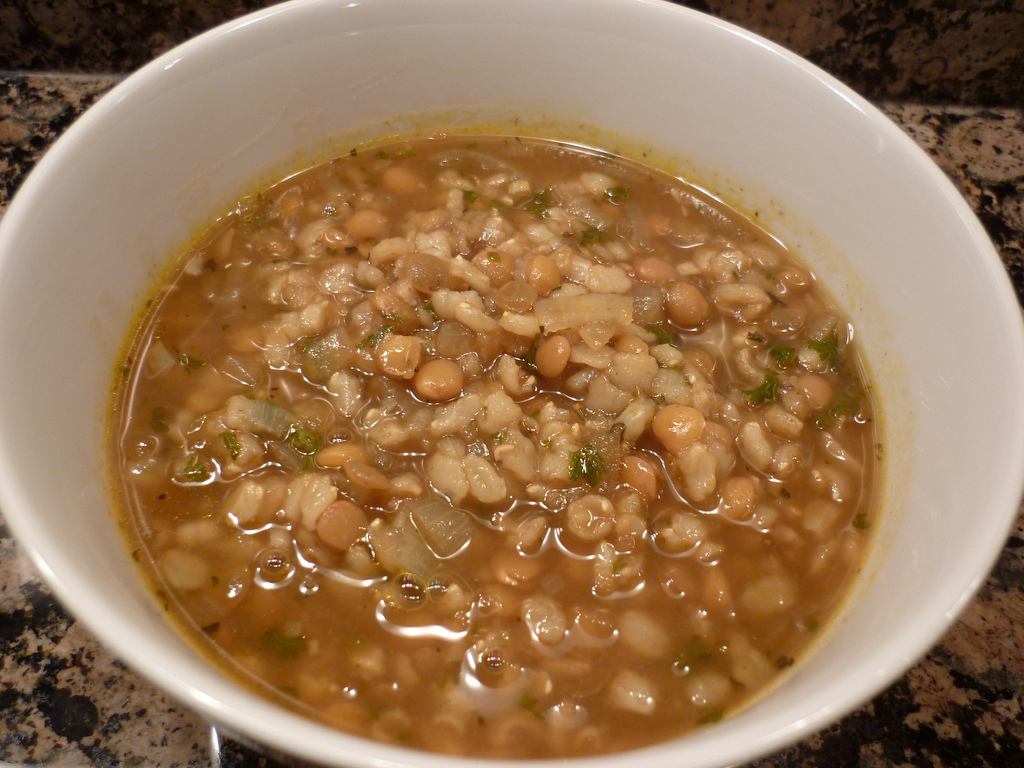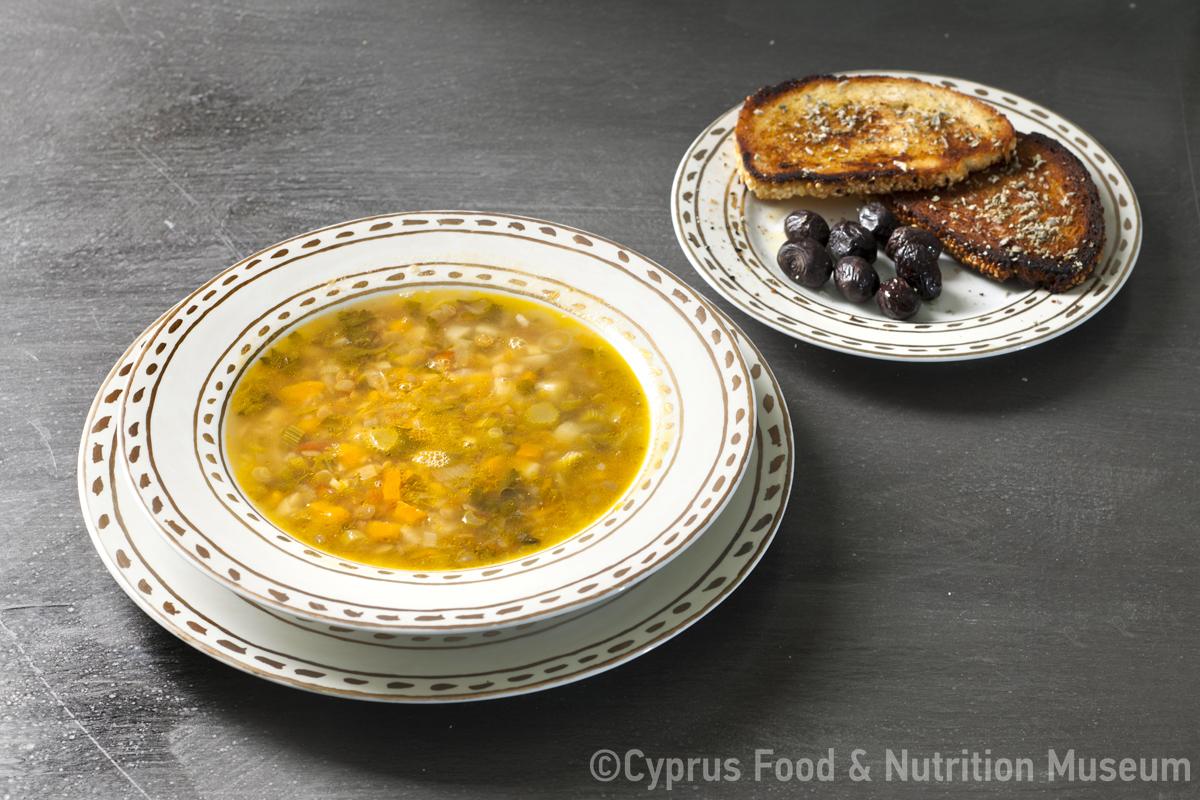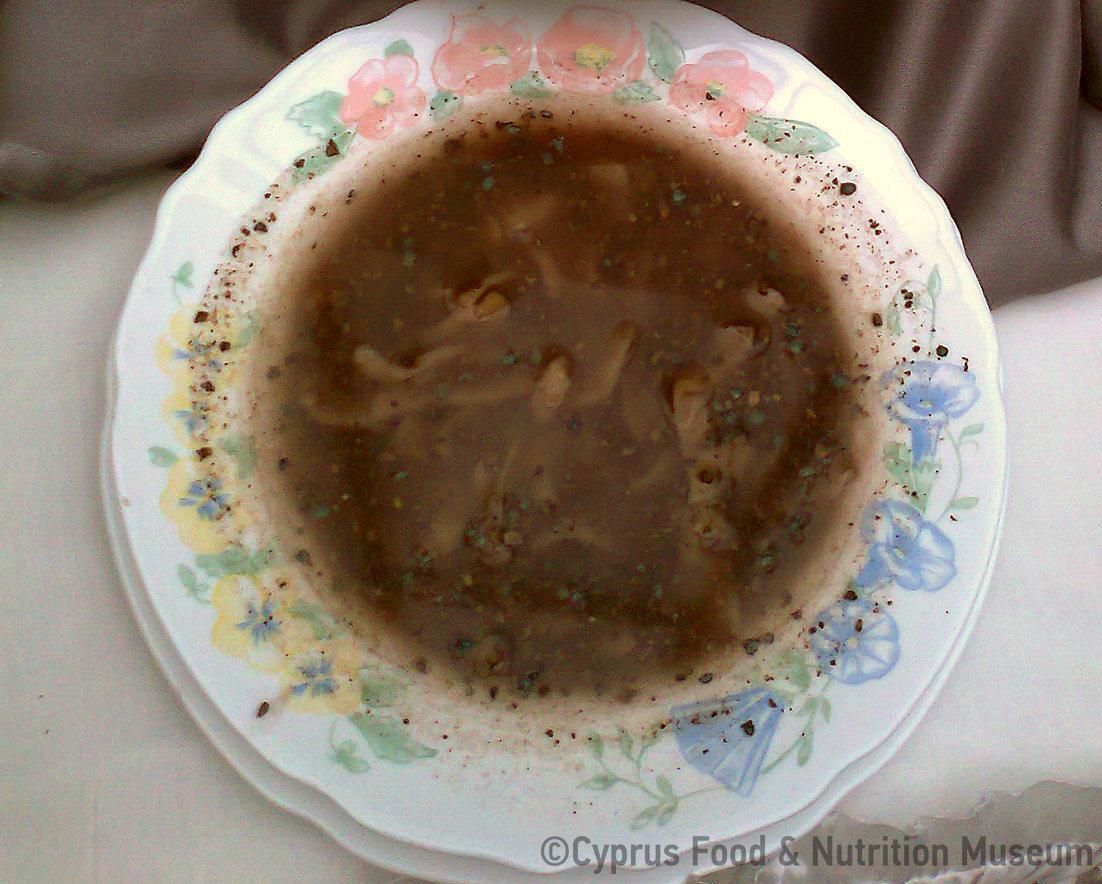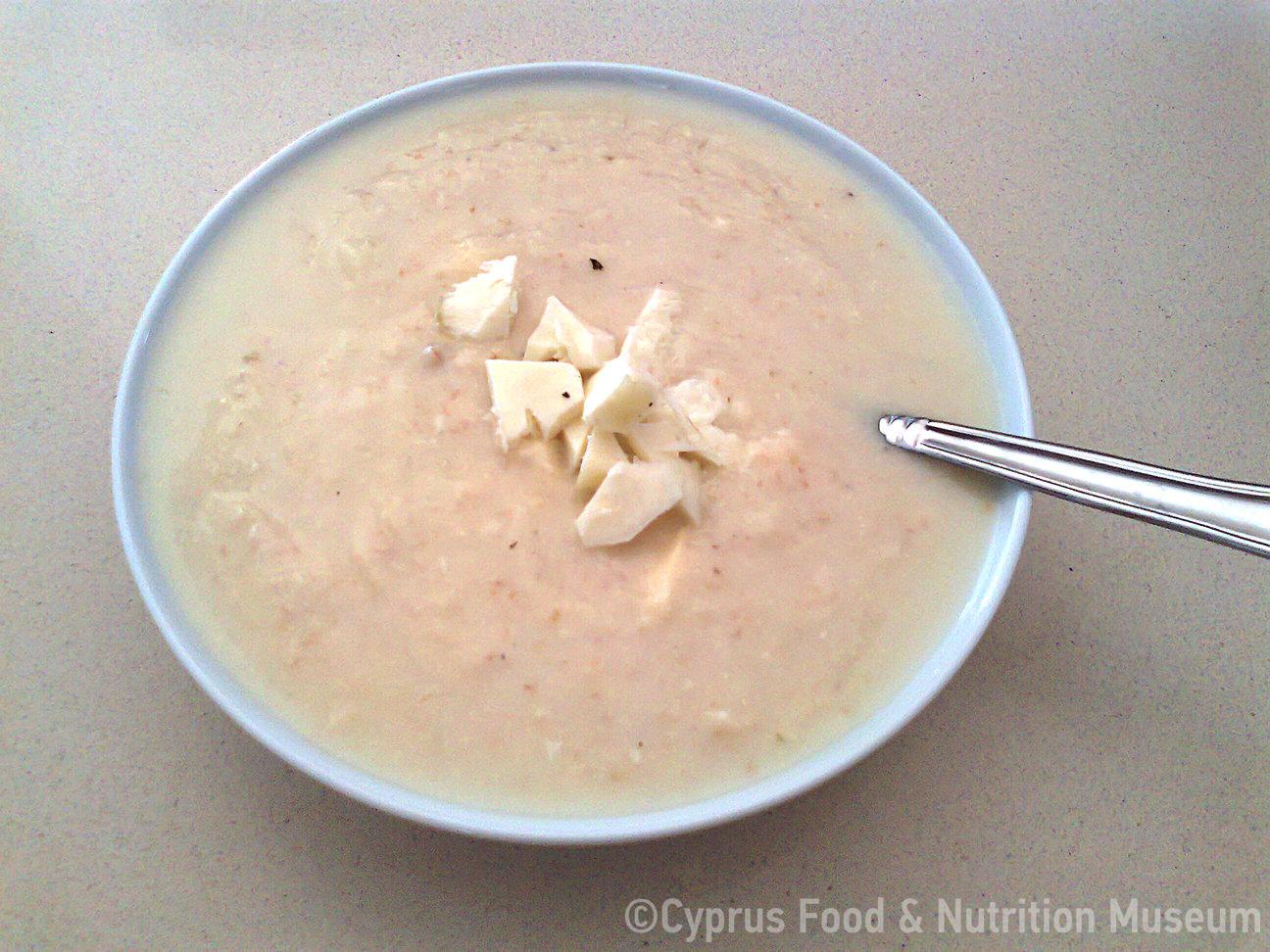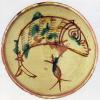
Εφυαλωμένη κούπα από εργαστήριο της Πάφου στην Κύπρο, μέσα 13ου αι. Το εσωτερικό του αγγείο κοσμούν εγχάρακτο ψάρι με τριγωνικό κεφάλι και πινελιές καστανού και πράσινου χρώματος. Το ψάρι αποτελεί συνηθισμένο διακοσμητικό μοτίβο των εφυαλωμένων επιτραπέζιων σκευών της βυζαντινής και μεσαιωνικής περιόδου. Αριθμός ευρήματος: B/2003/070 (Παπανικόλα-Μπακιρτζή 2004, σελ. 97).
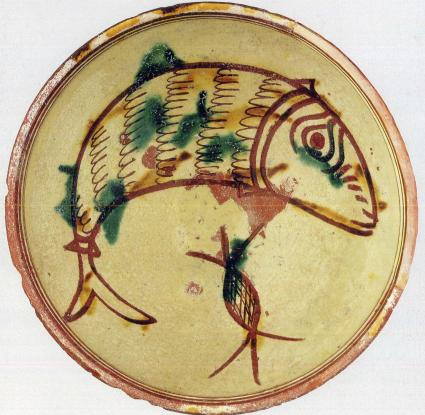
Thick broth, a type of soup.
Name - Origin
Byzantine authors refer to this particular dish as "monokythron".
Ingredients: Wine, oil, vinegar, onions, garlic, cabbage, pepper and other spices, cheese, eggs, fish. Various salted or fresh fish (such as tsiroi) are cooked in a clay pot together with (Cretan) cheese and eggs in a soup of wine, oil, onions, garlic, garlic, cabbage, pepper and various other spices (Koukoules 1952, p. 78, Koder 2005, p. 21).
Additional information and bibliography
Information about the recipe is taken from the poem of Ptohoprodromos. It is very likely that variations of such a broth existed in many Byzantine territories. In Cyprus, fish must have been a favourite and most common food among the coastal population.
F. Koukoules, 1952. Βυζαντινών Βίος και Πολιτισμός. Vol. E. Athens.
J. Koder, 2005. "Η καθημερινή διατροφή στο Βυζάντιο με βάση τις πηγές", p. 17-30. In D. Papanikola-Bakirtzi (ed.), Βυζαντινών Διατροφή και Μαγειρείαι. Archaeological Resources and Expropriation Fund.
Athanassios Vionis
